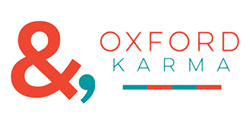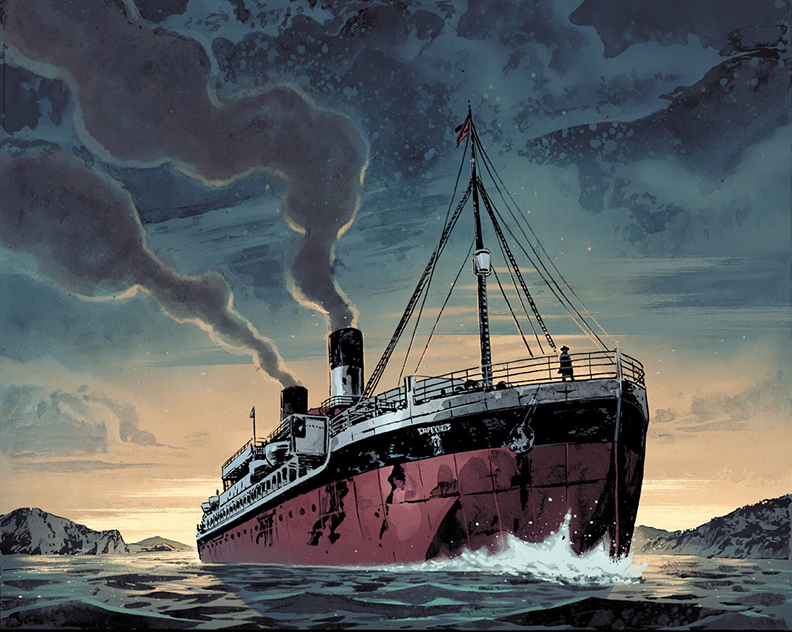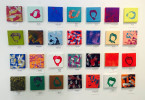Gabriel Hardman with Corinna Bechko and Jordan Boyd
4-7 p.m. Friday, April 17
New World Comics | Oklahoma City
Snapping a quick glance at San Diego in the summer, you could probably discern that comics are heavily anchored in American culture. Nearly every cult intellectual property, if not starting there, at least dabbles in the medium. (Star Wars and Planet of the Apes come to mind, just to consider a few.) This hybridized form of storytelling does something that novels and films just can’t quite get at: It allows for the reader to set their own pace similar the former, yet conjures something a bit more tangible, not unlike cinema.
Coincidentally, Oklahoma City was graced with a visit by one of the definitive artists in this modern age of trades. Gabriel Hardman has been the visual mind behind many of this century’s most prevalent works, including issues of Hulk, X-Men and the artist’s most personal work, Kinski. Additionally, Hardman has worked on the storyboards of enormous films such as last year’s Interstellar, Edge of Tomorrow and Spider-Man 3.
Last night, Hardman spoke with members of AIGA Oklahoma at the Bricktown Brewery about his career and the path of professional creativity. Beforehand, the artist shared a few words with Oxford Karma about his life, work and the artistic community he finds ideal. Hardman entered the panelized fray far younger than most, citing both an early fine arts education and crazed diligence.
“I was a 14-year-old taking the idea of being a professional in comics way too seriously. I was doing sequential art, sending samples to anyone I could. They were terrible, mind you,” Hardman laughed. “I consistently did that until I was almost 18, eventually leading to a job drawing War Machine for Marvel.”
Hardman’s work in comics would eventually open the door to the realm of storyboards. Starting with the likes of the Austin Powers trilogy and X-Men 2, the artist’s recent credits also include many of Christopher Noland’s recent blockbusters. However, comics and films are very different beasts.
“There are a lot more constraints when working on a film,” Hardman said. “You don’t get to choose the material, and it’s the director’s vision; you’re trying to make the world they want to make. It is creatively exciting, but if I’m drawing for Sam Raimi, I’m trying to deliver something he will respond to.”
In contrast, Hardman typically does “100 percent of everything in the book” when it comes to comics.
“Essentially, even if you’re the director of the film, you are not completely in charge,” he said. “In a comic, I can sit down and do everything. That’s enormously satisfying.”

The Crooked Man
Frequently providing the text to Hardman’s illustrations is his wife, Corinna Bechko. Originally working on “prose and non-fiction stuff,” Bechko had the basis for Heathen Town fathomed while Hardman was still working primarily in film. The artist adapted his wife’s aforementioned tale into a graphic novel, hurling him back into the world of comics.
“I got stuck doing freelance work for other writers when I came back, yet Corinna and I wanted to work on things to together,” Hardman said. “The first Planet of the Apes comic was kind of a gateway into doing that.”
The opportunity led to the pair’s proliferation, propelling them to “churn out work consistently while keeping the quality high.” Eventually, the couple moved onward from preexisting intellectual properties and into more original work, including Invisible Empire and the upcoming The Crooked Man, a crime story taking place in the midst of the San Francisco earthquake of 1906.
The social media age has made long-distance collaboration more accessible. Still, Hardman insisted that the convenience of technology cannot compensate for the intimacy of face-to-face interactions. When approached with the importance of networking, he was quick to extinguish the term.
“’Networking’ sounds cynical,” he said. “You should be focused on truly interacting with other creative people. Money goals aren’t always the best motivators. What I have in mind is a bit more ‘hippy.’”
There’s a bit of sincerity that comes with a group of people bent only on creation — a sincerity, and thus output, that transcends artistic trades. Ideas gradually snowball into movements, which in turn lay the foundation for future creative endeavors.
Hardman departed with a bit of indispensable wisdom for Oklahoma City dwellers.
“If there’s a growing creative scene, that’s exactly where you need to be,” he said. “Don’t isolate yourself. Communities of creative people are where the most important things have happened.”





